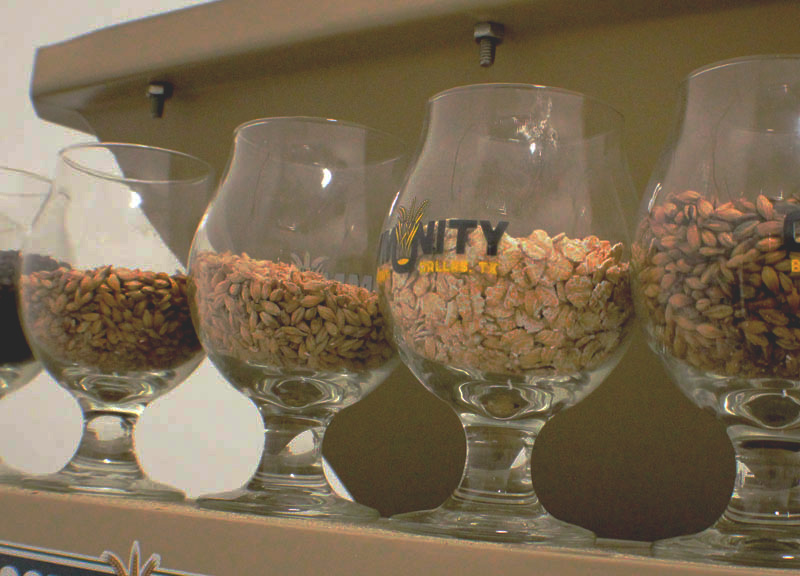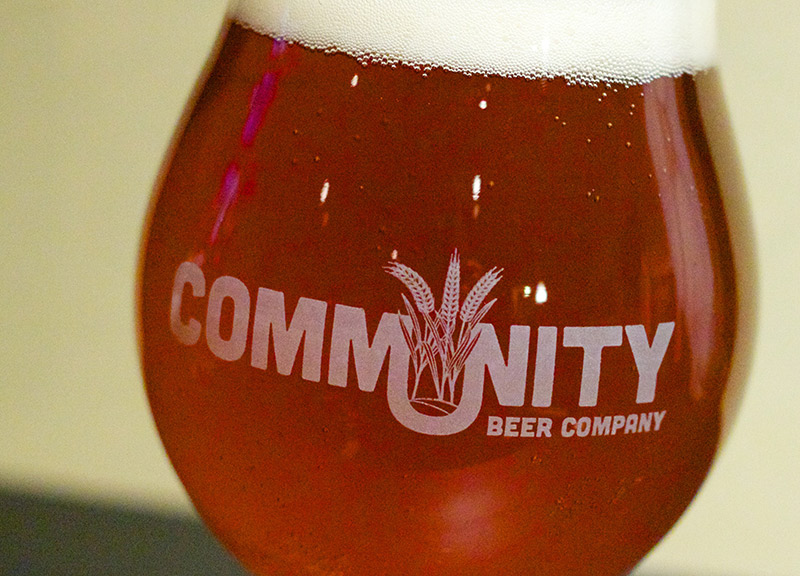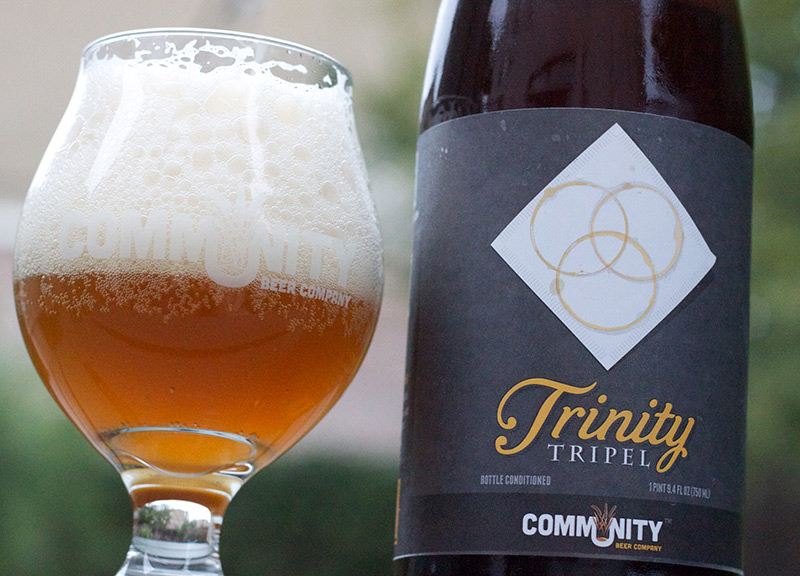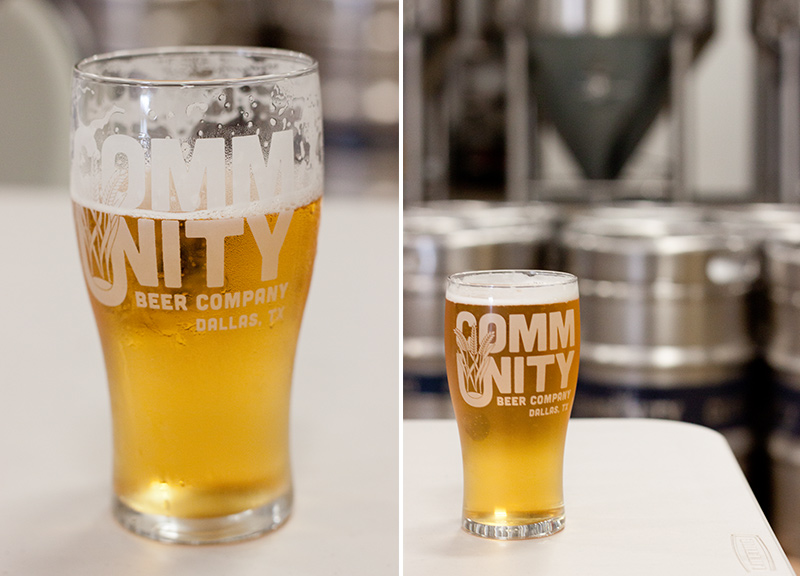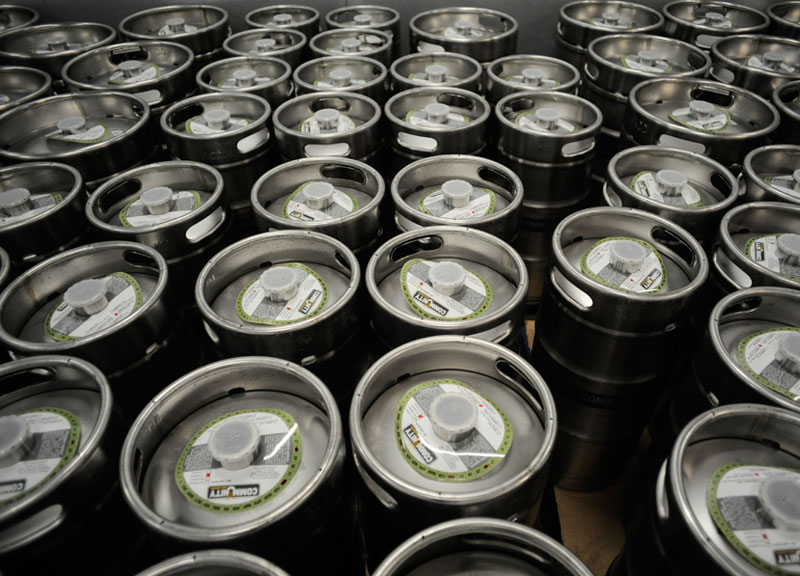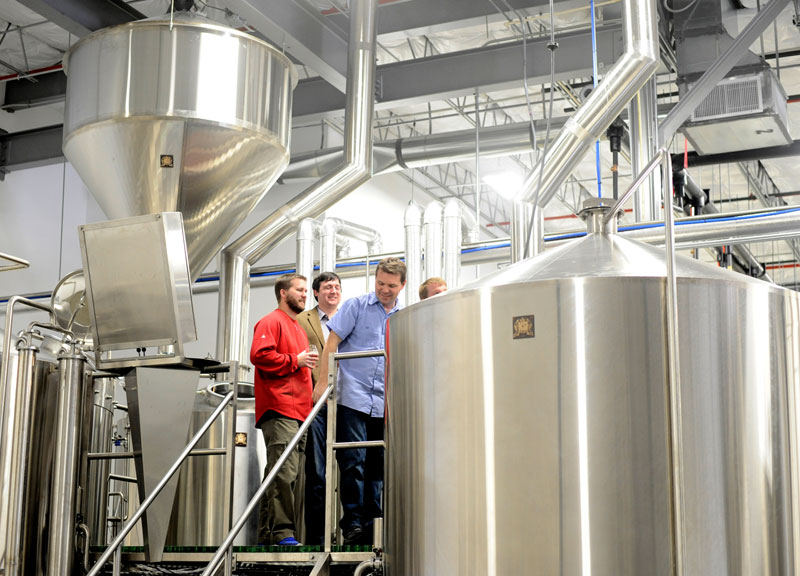Community Beer Company Had About As Good A First Year As Could Be Imagined.
There are now 15 breweries operating in North Texas. Yes, 15. And there are more on the way, too.
Which is all great news for the North Texas craft beer movement. Things are definitely looking up for beer-lovers around these parts.
Actually, they’re pretty good already, to be honest. Our region is starting to produce some truly great beers, and we’re certainly beginning to see some strength in all of these numbers.
But, on a smaller scale, is there a single brewery that could be called out as having the best year out of the bunch? It took us a pint or two to figure it out, but, yeah, we were able to come up one. First, though, we came up with a list of three finalists.
And it should surprise no one that Peticolas Brewing Company, Fort Worth newcomers Martin House Brewing Company and new kids on the Dallas block Community Beer Company were on that list.
As for Peticolas? Well, namesake operator Michael Peticolas is everyone’s favorite local brewer, plain and simple. He’s personable, friendly, knowledgeable, passionate and does a lot to advance the scene. Plus, he makes damn good beer. Royal Scandal is still my favorite local beer — even though his recently released double IPA, Sit Down Or I’ll Sit You Down, could wind up taking its place. In 2013, Peticolas added some new tanks to the brewery, and went a little nuts. Over the past 12 months, Peticolas has released no fewer than four specialty brews: Alfred Brown, Sit Down Or I’ll Sit You Down, The Duke, and Rye’t On.
Martin House, on the other hand, simply burst onto the scene with a lineup of very tasty beers — albeit to what seemed like very little fanfare. Day Break, Imperial Texan and Pretzel Stout are all excellent brews.
But, really, the more I thought about it, the more the answer became abundantly clear: 2013 was, quite simply, the year of Community Beer Company.
I mean, did you even know that Community is still in just its first year of existence? Hard to believe it with the year this team has had. Let’s just take a quick look at some of the achievements Community’s racked up since launching last winter:
• For one thing, they opened, which in and of itself is no small feat.
• They introduced the Mosaic IPA, one of the region’s top IPAs.
• They started bottling and distributing in both large and small format bottles.
• They introduced a pair of excellent Belgian beers with their Trinity Tripel and and Inspiration Ale.
• They were among the first North Texas breweries to open an in-house taprooms that sold beer directly to the public.
• They expanded their brewing capacity.
• They may be the only North Texas brewery to run an on-site yeast lab of their own.
• Oh, and they won a Great American Beer Festival gold medal for their Public Ale.
It’s hard to imagine the first year for any craft brewery going much better than that. As a result, we’re confidently naming Community Beer Company as our choice for North Texas’ 2013 Brewery of the Year.
To celebrate, I sat down with brewery founder Kevin Carr and reminisced some on the events of the past year, while also looking forward to what’s shaping up to be a bright future for this young brewery and this young beer scene alike.
What a year you’ve had! As you approach the one-year anniversary of the brewery’s opening, can you tell us if this is how you drew it up?
Thank you! I would say, yes, pretty much — thankfully. We knew it would be a challenging year. Opening up a brewery is not easy. But it has been very rewarding, and we’ve been on a straight-up climb ever since we opened. We’d hoped to do four things in our first year: 1.) Obviously, launch the brewery, 2.) become known for our quality of brews and maybe win some awards, 3.) begin bottling within nine months, and 4.) open our taproom. We are happy — or relieved — to say we’ve accomplished all our first-year goals.
What would you say has been the biggest challenge of the last year?
The biggest challenge, really, has been all that is involved in opening a brewery. I’d say being able to acquire all the equipment needed has been the biggest challenge. Most of this stuff is very expensive and, due to the rise of craft beer, lead times on receiving things can be as much as six months long.
When you first opened, you launched with an initial beer lineup that included the Public Ale, the Vienna Lager and the Pale Ale. At the time — and given the massive size of the brewery — I had concerns that, while the beers were good, they weren’t distinct enough to stand out in the market. But then you released the Mosaic IPA. And, in my mind, that kind of changed everything.
Yeah, we wanted to start out with really approachable beers out of the gate before changing it up a bit. Our Mosaic IPA has been extremely well-received. I think the main appeal is that it is extremely drinkable. Many, if not most, IPAs out there pretty much try to blow your head off with hops, which is something I really got burned out on over the years. But Mosaic is different in that it is incredibly balanced. We just let the amazing hops do their own thing and balance out the back-end, making it enjoyable for both novice IPA drinkers and hop-heads alike.
For a brewery that’s only a year old, you now have a very diverse lineup of beers — from American IPAs to Belgian and session beers. Where do you get the inspiration for your brews?
It has always been our goal to provide a wide-range of beers. We have a great brewing team, led by head brewer Jamie Fulton and assistant brewer Aric Hulsey. These guys are very technical brewers and so we jump at the opportunity to let them showcase their talents. Overall, though, we look at what styles are out there that we’d like to do, as well as stuff that Jamie has done in the past, before Community Beer Company, to determine what we’ll do next.
Can you share any plans for the coming year? Any new beers in the works that you’re particularly excited about?
We’ve got some cool things in the works for next year. On the beer side, we’re releasing our first bourbon barrel-aged beer featuring Glenstemmons — our Scotch Ale. We are also releasing our coffee porter. We’ve sourced the beans from Ascension, the great coffee bar right around the corner from us and so are calling it Ascension Porter. Also, we’re about to open our expanded taproo,m where we’ll release a constant supply of brews only available at the brewery. This will let us really do some interesting stuff.
One of my favorite aspects of your operation is that the brewery has a dedicated yeast lab, which, if I’m not mistaken, is the only one of its kind in the area. Can you explain the benefits of having a yeast lab and how that impacts the beer?
Having our own yeast lab is definitely an important part of what we do. The main benefit is quality. Yeast is one of the most important components of beer, and Aric is in the lab literally counting good yeast colonies and throwing out bad ones before stepping it up to a full batch. By managing our own yeast from Petri dish to a pitchable quantity, we really get to understand how it will affect the taste and fermentation of the beer. It also helps us accurately know how long it will take for fermentation to complete, which helps us plan beer production.
What was it like taking home gold at the Great American Beer Festival? Has that done anything to change local perception?
Man, it was surreal and humbling. Given that it was our first year to compete at GABF, we’d hoped to just medal. But, of course, we didn’t expect anything to come out of it. So, winning a gold in our first year was awesome. In terms of local perception, I think it has really underscored the quality we are producing out of our brewery. One great thing about the Public Ale winning gold is that I believe it has increased awareness on what a good English Ale or ESB [extra special/extra strong bitter beer] can be. Public Ale always did pretty good for us in terms of sales, but it isn’t a big beer like some of the others we and other breweries around town do. So I’d say, until the gold medal win, our Public Ale was fairly under-appreciated.
What is the weirdest (or dumbest) question you’ve been asked by visitors at the brewery?
One guy asked us, while standing right next to our brewhouse and tanks, “Where do you make the beer?” I had to just wait for a moment until the light bulb went off in his head.
Aside from your own brewery, what’s your favorite Texas brewery? What about non-North Texas breweries?
Wow, that’s a tough one. I’m a big fan of Real Ale, and particularly the specialty stuff they do. But I’ve got to give a nod to our friend Michael and Peticolas Brewing. I think he and Jamie Fulton are North Texas’ best brewers. As for non-Texas breweries, I’d have to say North Coast Brewing in Northern California. I’ve loved everything of theirs I’ve tasted, especially Brother Thelonious. I’m also a fan of The Lost Abbey and Pizza Port, also in California.
What’s your take on the local craft beer scene? Room to grow or reaching its peak?
I believe there is still a great deal of growth to be had. When you look at beer sales and local demographics, it is pretty evident that craft beer still hasn’t dominated consumer choice. As more and more people gravitate to local craft beer, they move away from big brands. We’re also seeing folks who typically don’t drink beer buying local craft beer because of the higher quality. And new generations of beer drinkers come into the market with better, fresher beer readily available to them, which will shape their definition of quality beer. We’re just honored to be a part of the movement here in North Texas. Cheers!
